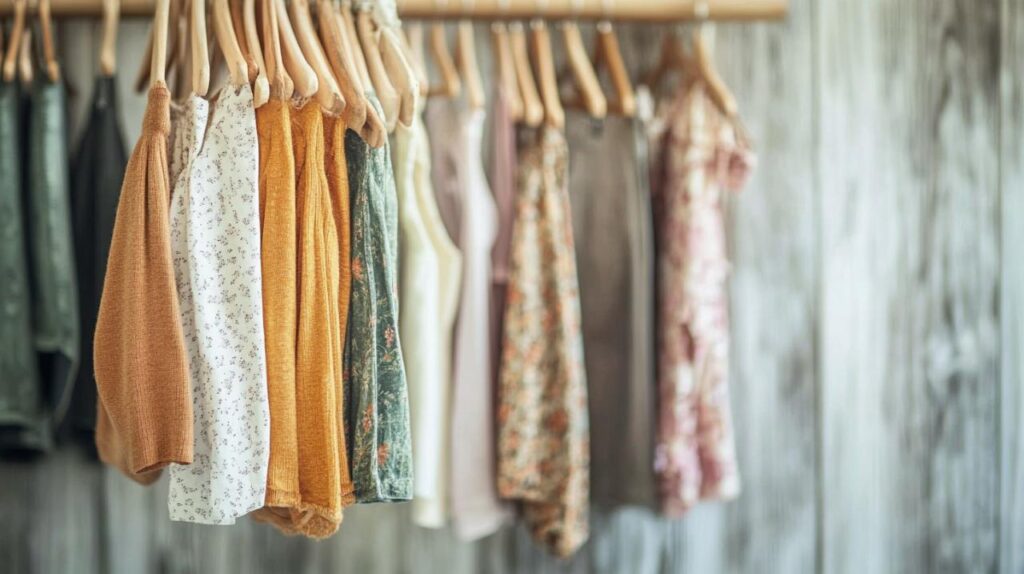Finding stylish clothing that does not cost the earth, in both senses, has become a priority for many shoppers. Balancing the desire for a refreshed wardrobe with a commitment to environmental and ethical responsibility can feel like a tall order, yet there are numerous ways to achieve this. From exploring pre-loved treasures to making more thoughtful purchasing decisions, the journey towards a more sustainable wardrobe can also be surprisingly rewarding for your wallet. This approach not only reduces waste but also supports brands and initiatives that prioritise fair treatment of workers and the planet.
Discovering budget-friendly fashion through pre-loved treasures
One of the most effective ways to build a sustainable wardrobe whilst staying within budget is to embrace second-hand clothing. Charity shops and vintage boutiques offer a treasure trove of unique pieces that have plenty of life left in them. These spaces are filled with garments that reflect different eras and styles, making it possible to discover something truly special that stands out from the mass-produced offerings on the high street. Shopping in this way keeps clothing out of landfill and reduces the demand for new production, which can have a significant environmental impact. Many shoppers are surprised by the quality and variety available in these settings, where patience and a keen eye can lead to remarkable finds.
Exploring Charity Shops and Vintage Boutiques for Hidden Gems
Charity shops are not just about affordability; they are about uncovering stories and styles that have stood the test of time. Each item has a history, and by choosing to purchase pre-loved clothing, you are extending its lifespan and reducing the carbon footprint associated with manufacturing new garments. Vintage boutiques take this a step further by curating collections that celebrate particular decades or aesthetics, offering garments that are both nostalgic and timeless. These shops often stock high-quality pieces made from durable materials, which means they are likely to last far longer than many contemporary alternatives. For those who enjoy the thrill of the hunt, spending a Saturday afternoon browsing through racks of clothing can be both entertaining and environmentally responsible. It is also a fantastic opportunity to find great deals on fashion items that are not available anywhere else, allowing you to develop a wardrobe that is truly individual.
Organising Clothing Swaps with Friends for a Fresh Wardrobe
Another innovative approach to refreshing your wardrobe without spending a penny is to organise clothing swaps with friends. This practice has gained popularity as people recognise the benefits of sharing and exchanging garments rather than constantly purchasing new ones. A clothing swap involves gathering a group of friends, each bringing items they no longer wear, and then swapping them for pieces that someone else has brought along. This method not only breathes new life into your wardrobe but also fosters a sense of community and shared values around sustainable fashion. It is a fun and social way to update your style, and it reduces the demand for new clothing production. By participating in swaps, you are actively contributing to clothing waste reduction and supporting a circular economy where garments are reused and appreciated rather than discarded.
Making thoughtful purchasing decisions for long-term value
While second-hand shopping and swaps are excellent strategies, there are times when purchasing new clothing is necessary. When that moment arises, making thoughtful and informed decisions can ensure that your choices align with your ethical and environmental values. Sustainable shopping involves considering the entire lifecycle of a garment, from the materials used in its creation to the conditions under which it was made. By prioritising quality over quantity and seeking out brands that are transparent about their practices, you can build a wardrobe that lasts longer and has a lower overall impact on the planet.
Choosing garments made from sustainable materials
The materials from which clothing is made play a crucial role in determining its environmental footprint. Opting for garments crafted from sustainable materials such as organic cotton, recycled fabrics, or natural fibres can significantly reduce the negative impact of your wardrobe. Organic cotton, for instance, is grown without harmful pesticides and uses less water than conventional cotton, making it a more eco-friendly choice. Recycled fabrics take existing materials and transform them into new garments, diverting waste from landfills and reducing the need for virgin resources. Many ethical brands now offer collections made from these materials, and platforms like Good On You provide brand ratings based on their impact on people, the planet, and animals, making it easier for consumers to identify companies that align with their values. Brands such as Unfolded design clothes with input from a community and produce them on demand to reduce waste, ensuring that each piece is made with care and consideration. By doing your homework and seeking out such brands, you can make purchases that reflect your commitment to sustainability.

Caring for Your Clothes to Extend Their Lifespan
Once you have invested in quality garments, taking proper care of them is essential to maximise their lifespan. Clothing that is well-maintained can last for many years, reducing the need to purchase replacements and thereby minimising waste. Simple practices such as washing clothes at lower temperatures, air-drying them instead of using a tumble dryer, and repairing minor damages promptly can make a significant difference. The concept of the thirty-wear challenge encourages consumers to ask themselves whether they will wear an item at least thirty times before purchasing it, promoting mindful consumption and discouraging impulse buys. By adopting this mindset, you are more likely to invest in pieces that truly suit your style and needs, rather than succumbing to fleeting trends. Additionally, learning basic sewing skills or finding a local tailor can extend the life of your favourite items, transforming them into long-lasting staples in your wardrobe. This approach not only benefits the environment but also fosters a deeper appreciation for the clothes you own.
Ethical shopping also means considering how workers are treated in the production of your clothing. Companies like Unfolded partner with ethical factories in India and aim to offer better wages for garment workers whilst funding education for children near their factories. Since its founding in Edinburgh in 2021, Unfolded has funded education for over ten thousand children and ensured that six hundred workers have received higher wages. Supporting brands that prioritise fair wages and safe working conditions is a powerful way to contribute to social impact alongside environmental sustainability. Platforms such as Gather&See, a UK-based online shop established in 2014, curate collections from small, sustainable brands that focus on ethical practices, offering worldwide shipping and a range of accessories and jewellery. For every email sign-up, they protect twenty-five trees, further demonstrating their commitment to the environment.
Before making any purchase, it is worth taking a moment to reflect on whether the item is truly necessary. Avoiding impulse buys and instead planning your wardrobe additions can lead to a more cohesive and sustainable collection. Consider hiring outfits for special occasions rather than buying something you may only wear once, which reduces waste and offers greater choice. When you are finished with your clothes, donating them, selling them, or recycling them instead of discarding them ensures that they continue to have value and do not end up in landfill. In the UK, the scale of waste is striking; in 2018 to 2019, retailers sold five hundred and forty-nine million plastic bags, and less than one in four hundred coffee cups are recycled. These statistics highlight the importance of making conscious choices in all aspects of consumption, not just fashion.
Engaging with the sustainable fashion movement can also involve participating in broader initiatives. Whether through volunteering, campaigning, fundraising, or simply shopping more thoughtfully, there are many ways to contribute to positive change. Some organisations offer opportunities to leave a gift in your will to support ongoing efforts towards ethical and sustainable practices. By staying informed and connected to these causes, you can play an active role in shaping a more responsible fashion industry. The journey towards a sustainable wardrobe is not about perfection but about making better choices wherever possible and recognising the impact those choices have on the world around us.
Ultimately, finding great value in fashion whilst prioritising sustainability is about shifting your perspective and embracing new habits. It requires a willingness to explore alternatives to fast fashion, to invest in quality over quantity, and to care for the garments you already own. With resources like Good On You, Gather&See, and Unfolded, along with a growing community of like-minded individuals, the path towards ethical fashion has never been more accessible. By combining creativity, patience, and a commitment to positive change, you can enjoy a stylish wardrobe that reflects your values and supports a healthier planet for future generations.


